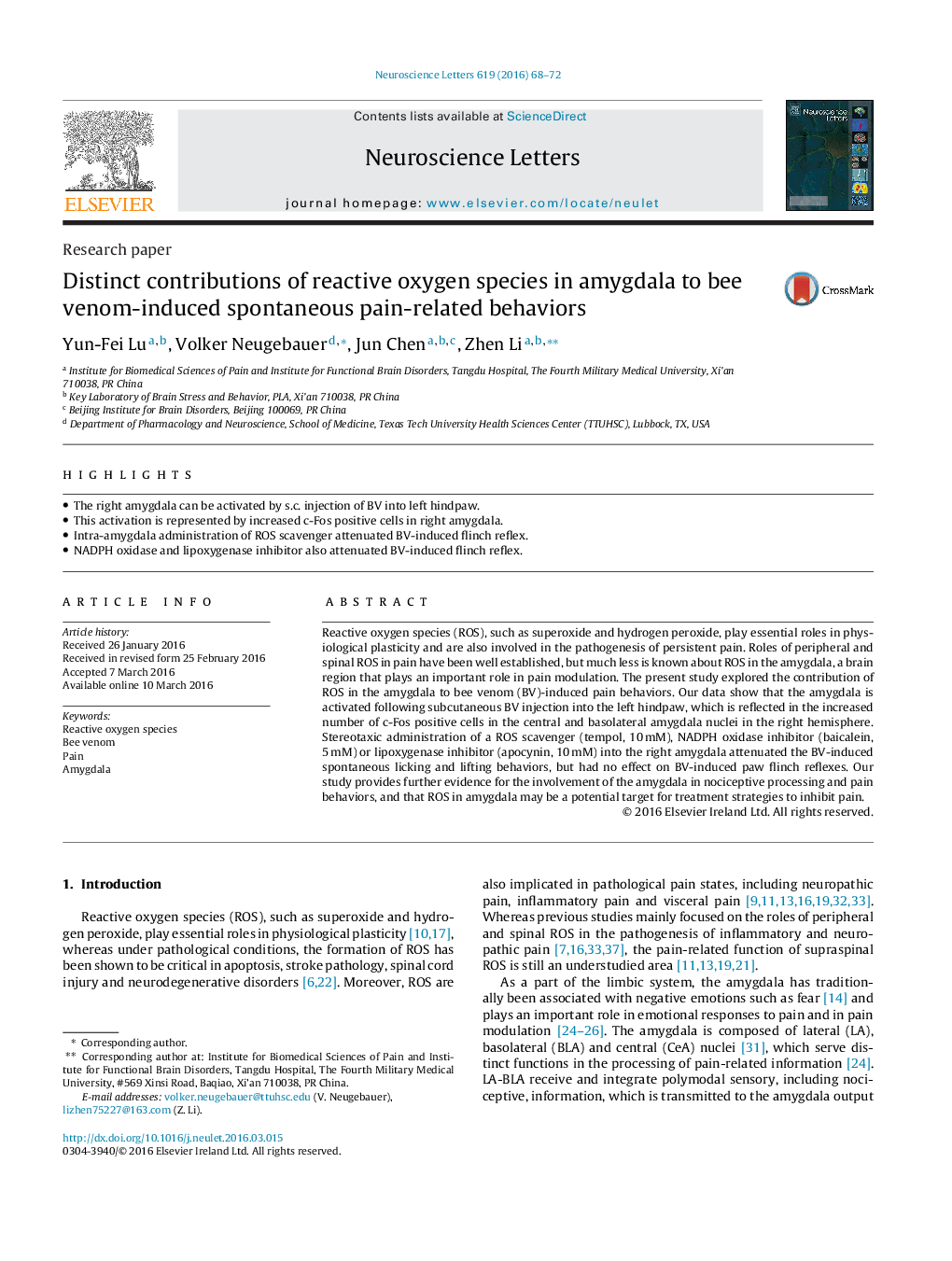| کد مقاله | کد نشریه | سال انتشار | مقاله انگلیسی | نسخه تمام متن |
|---|---|---|---|---|
| 6279717 | 1615080 | 2016 | 5 صفحه PDF | دانلود رایگان |
عنوان انگلیسی مقاله ISI
Distinct contributions of reactive oxygen species in amygdala to bee venom-induced spontaneous pain-related behaviors
ترجمه فارسی عنوان
مشارکت های متمایز از گونه های اکسیژن واکنشی در رفتار آمیگدال به رفتار ناشی از درد ناشی از خودبخود ناشی از زهر زنبور عسل
دانلود مقاله + سفارش ترجمه
دانلود مقاله ISI انگلیسی
رایگان برای ایرانیان
کلمات کلیدی
گونه های اکسیژن واکنش پذیر، زهر زنبور عسل، درد، آمیگدالا،
موضوعات مرتبط
علوم زیستی و بیوفناوری
علم عصب شناسی
علوم اعصاب (عمومی)
چکیده انگلیسی
Reactive oxygen species (ROS), such as superoxide and hydrogen peroxide, play essential roles in physiological plasticity and are also involved in the pathogenesis of persistent pain. Roles of peripheral and spinal ROS in pain have been well established, but much less is known about ROS in the amygdala, a brain region that plays an important role in pain modulation. The present study explored the contribution of ROS in the amygdala to bee venom (BV)-induced pain behaviors. Our data show that the amygdala is activated following subcutaneous BV injection into the left hindpaw, which is reflected in the increased number of c-Fos positive cells in the central and basolateral amygdala nuclei in the right hemisphere. Stereotaxic administration of a ROS scavenger (tempol, 10Â mM), NADPH oxidase inhibitor (baicalein, 5Â mM) or lipoxygenase inhibitor (apocynin, 10Â mM) into the right amygdala attenuated the BV-induced spontaneous licking and lifting behaviors, but had no effect on BV-induced paw flinch reflexes. Our study provides further evidence for the involvement of the amygdala in nociceptive processing and pain behaviors, and that ROS in amygdala may be a potential target for treatment strategies to inhibit pain.
ناشر
Database: Elsevier - ScienceDirect (ساینس دایرکت)
Journal: Neuroscience Letters - Volume 619, 21 April 2016, Pages 68-72
Journal: Neuroscience Letters - Volume 619, 21 April 2016, Pages 68-72
نویسندگان
Yun-Fei Lu, Volker Neugebauer, Jun Chen, Zhen Li,
